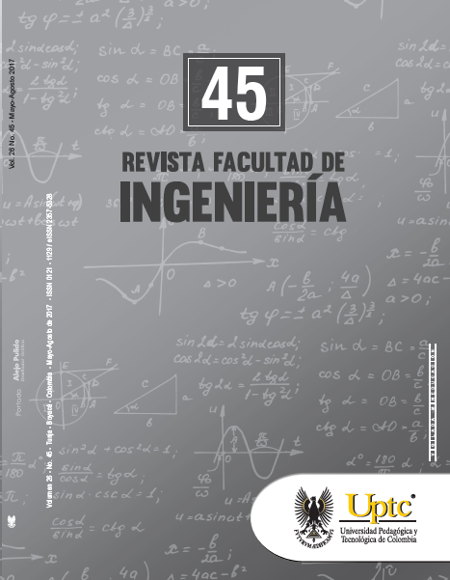Fuzzy AHP for 3PL supplier’s performance evaluation considering risk

Abstract
The 3PL logistic providers influence directly the global performance of the supply chain and business management success. This provider selection involves a detailed and careful study of different criteria. However, although the selection procedure had been appropriate, it is very important to analyze the benefits, advantages and disadvantages that the providers offer to the company. Once the provider is selected, an evaluation is required to allow the company to monitor the provider performance.
On the other hand, the supply chain risk management is an issue with huge importance, from the academic perspective and the practical orientation. According to the literature, one of the main risks is the operational risk. Considering these a multicriteria methodology is proposed to evaluate 3PL performance, given that the operational risk is considered into the whole company process. The proposed model is based in a FAHP and validated in a manufacturing Colombian company for a freight land transport provider.
Keywords
Fuzzy Analytic Hierarchy Process, FAHP, Operational risk, Performance evaluation, 3PL Suppliers
References
- P. Kumar, and R. K. Singh, “A fuzzy AHP and TOPSIS methodology to evaluate 3PL in a supply chain,” J. Model. Manag., vol. 7 (3), pp. 287-303, Oct. 2012. DOI: http://doi.org/10.1108/17465661211283287. DOI: https://doi.org/10.1108/17465661211283287
- X. Zhu, “Management the risks of outsourcing: Time, quality and correlated costs,” Transp. Res. Part E Logist. Transp. Rev., pp. 1-13, 2015.
- M. Arroyo, J. Gaytan, and S. Sierra, “El proceso de toma de decisiones para la tercerización de funciones logísticas: prácticas mexicanas,” ITESM, Toluca, no. 221, pp. 1-28, 2007.
- A. Aguezzoul, “Third-party logistics selection problem: A literature review on criteria and methods,” Omega, vol. 49, pp. 69-78, Dec. 2014. DOI: http://doi.org/10.1016/j.omega.2014.05.009. DOI: https://doi.org/10.1016/j.omega.2014.05.009
- J. C. Osorio Gómez, M. F. Herrera Umaña, and M. A. Vinasco, “Modelo para la evaluación del desempeño de los proveedores utilizando AHP,” Ing. y Desarro., vol. 23, pp. 43-58, 2008.
- Miebach, “Estudios sobre tercerización 2012 Resultados y conclusiones,” in Miebach, the supply chain engineers, pp. 1-63, 2012.
- N. S. Fernandez, L. F. Scavarda, A. Leiras, and S. Hamacher, “Diseño de sistemas de medición de desempeño de proveedores: experiencias de un caso de estudio,” Produção, vol. 22 (1), pp. 43-57, 2012. DOI: http://doi.org/10.1590/S0103-65132011005000043. DOI: https://doi.org/10.1590/S0103-65132011005000043
- P. Chithambaranathan, N. Subramanian, and P. L. K. Palaniappan, “An innovative framework for performance analysis of members of supply chains,” Benchmarking, vol. 22 (2), pp. 309-334, Mar. 2015. DOI: http://doi.org/10.1108/BIJ-11-2012-0081. DOI: https://doi.org/10.1108/BIJ-11-2012-0081
- R. D. and T. T. N. Saleh Fahed Alkhatib, “Logistics Service Providers (LSPs) evaluation and selection: Literature review and framework development,” Strateg. Outsourcing An Int. J., 2015.
- K. Tezuka, “Rationale for utilizing 3PL in supply chain management: A shippers’ economic perspective,” IATSS Res., vol. 35 (1), pp. 24-29, Jul. 2011. DOI: http://doi.org/10.1016/j.iatssr.2011.07.001. DOI: https://doi.org/10.1016/j.iatssr.2011.07.001
- G. Vaidyanathan, “A Framework for Evaluating Third-Party Logistics,” Commun. ACM, vol. 48 (1), pp. 89-94, Jan. 2005. DOI: http://doi.org/10.1145/1039539.1039544. DOI: https://doi.org/10.1145/1039539.1039544
- S. Perçin, “Evaluation of third-party logistics (3PL) providers by using a two-phase AHP and TOPSIS methodology,” Benchmarking, vol. 16 (5), pp. 588-604, Aug. 2009. DOI: http://doi.org/10.1108/14635770910987823. DOI: https://doi.org/10.1108/14635770910987823
- A. Jayant, P. Gupta, S. K. Garg, and M. Khan, “TOPSIS-AHP based approach for selection of reverse logistics service provider: A case study of mobile phone industry,” Procedia Eng., vol. 97, pp. 2147-2156, 2014. DOI: http://doi.org/10.1016/j.proeng.2014.12.458. DOI: https://doi.org/10.1016/j.proeng.2014.12.458
- L. C. Urbano Guerrero, L. S. Muñoz Marín, and J. C. Osorio Gómez, “Selección multicriterio de aliado estratégico para la operación de carga terrestre,” Estud. Gerenciales, vol. 32 (138), pp. 35-43, Jan. 2016. DOI: http://doi.org/10.1016/j.estger.2015.09.002. DOI: https://doi.org/10.1016/j.estger.2015.09.002
- W. C. Tsai, “Fuzzy Measures of Supplier Evaluation under Lean Concepts,” The Journal of the Operational Research Society, vol. 60 (7), pp. 1005-1011, Jul. 2009. DOI: http://doi.org/10.1057/palgrave.jors.2602643. DOI: https://doi.org/10.1057/palgrave.jors.2602643
- N. K. Sahu, S. Datta, and S. S. Mahapatra, “Fuzzy based appraisement module for 3PL evaluation and selection,” Benchmarking,vol. 22 (3), pp. 354-392, Apr. 2015. DOI: http://doi.org/10.1108/BIJ-01-2013-0002. DOI: https://doi.org/10.1108/BIJ-01-2013-0002
- O. Cooper, P. Tadikamalla, and J. Shang, “Selection of a Third-Party Logistics Provider : Capturing the Interaction and Influence of Performance Metrics with the Analytical Network Process,” J. Multi-Crit. Decis. Anal., vol 19 (3-4), pp. 115–128, May. 2012. DOI: http://doi.org/10.1002/mcda.489. DOI: https://doi.org/10.1002/mcda.489
- J. L. García, R. Villanueva, A. Alvarado, and A. A. Maldonado, “Evaluación y Selección de Proveedores Usando el Método Moora,” in Congreso Internacional de Investigacion, Chiapas, México, 2012, vol. 4 (2), pp. 454-459.
- S. Perçin, “Fuzzy multi‐criteria risk‐benefit analysis of business process outsourcing (BPO),” Inf. Manag. Comput. Secur., vol. 16 (3), pp. 213-234, Jul. 2008. DOI: http://doi.org/10.1108/09685220810893180. DOI: https://doi.org/10.1108/09685220810893180
- V. Rattanawiboonsom, “Effective Criteria for Selecting Third-Party logistics Providers : The Case of Thai Automotive Industry Rattanawiboonsom,” World Review of Business Research, vol. 4 (2), pp. 196-205, 2014.
- T. Schoenherr, V. M. Rao Tummala, and T. P. Harrison, “Assessing supply chain risks with the analytic hierarchy process: Providing decision support for the offshoring decision by a US manufacturing company,” J. Purch. Supply Manag., vol. 14 (2), pp. 100-111, Jan. 2008. DOI: http://doi.org/10.1016/j.pursup.2008.01.008. DOI: https://doi.org/10.1016/j.pursup.2008.01.008